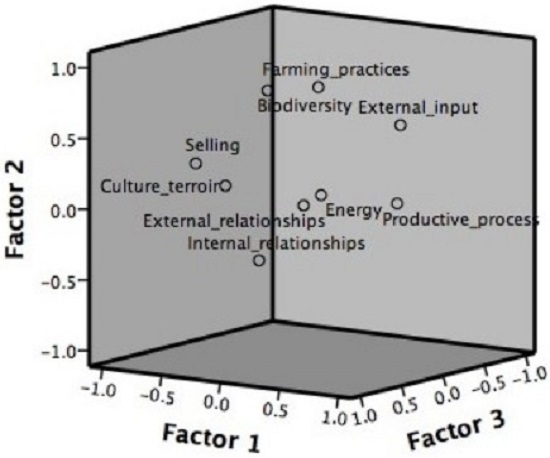An Interpretive Framework for Assessing and Monitoring the Sustainability of School Gardens
Abstract
:1. Introduction
emphasizing how experiential learning, ecological literacy, and environmental awareness, as well as technical agricultural subjects, could all be integrated within a garden. It is interesting to note how some of the key principles of sustainable development, such as inter- and intra-generational equity and the interrelation between multifaceted aspects, have already been mentioned in relation to a school curriculum almost 80 years before in the 1987 Brundtland report (known as “Our Common Future”) [3].“... to open the child’s mind to his natural existence, develop his sense of responsibility and of self dependence, train him to respect the resources of the earth, teach him the obligations of citizenship, interest him sympathetically in the occupations of men, touch his relation to human life in general, and touch his imagination with the spiritual forces of the world”[2]
2. Materials and Methods
2.1. Geographical Location and Selected School Gardens
2.2. SAEMETH-G Method: Dimensions, Components, and Indicators of Sustainability
- for the social-cultural dimensions: two components were selected (internal and external relationships) with a weight equal to 50;
- for the agro-environmental dimensions: five components were selected (biodiversity, culture/terroir, farming practices, productive process, energy) with a weight equal to 20; and
- for the economic dimensions: two components were selected (external input, products sold) with a weight of 50.
2.3. Collection and Statistical Elaboration of the Data
3. Results
3.1. Application of SAEMETH-G: Level 1—Dimensions
3.2. Application of SAEMETH-G: Level 2—Components
3.3. Principal Components Analysis (Level 2) and Cluster Analysis (Level 3)
4. Discussion
5. Conclusions
Acknowledgments
Author Contributions
Conflicts of Interest
References
- Desmond, D.; Grieshop, J.; Subramanium, A. Revisiting Garden-based Learning in Basic Education; Food and Agriculture Organisation of the United Nations: Rome, Italy, 2002. [Google Scholar]
- Bailey, L.H. The Nature Study Idea; McMillan: New York, NY, USA, 1909. [Google Scholar]
- Dresher, A.W. Improving child nutrition and agricultural education through the promotion of School Garden Programs. In First Draft Concept Note on School Gardens; FAO: Rome, Italy, 2002. [Google Scholar]
- Blair, D. The child in the garden: An evaluative review of the benefits of school gardening. J. Environ. Educ. 2009, 40, 15–38. [Google Scholar] [CrossRef]
- Cheng, M.H. Asia-Pacific faces diabetes challenge. Lancet 2010, 375, 2207–2210. [Google Scholar] [CrossRef]
- Frerichs, L.; Brittin, J.; Sorensen, D.; Trowbridge, M.J.; Yaroch, A.L.; Siahpush, M. Influence of school architecture and design on healthy eating: A review of the evidence. Am. J. Public Health 2015, 105, e46–e57. [Google Scholar] [CrossRef] [PubMed]
- Harmon, A.; Lapp, J.L.; Blair, D.; Hauck-Lawson, A. Teaching Food System Sustainability in Dietetic Programs: Need, Conceptualization, and Practical Approaches. J. Hunger Environ. Nutr. 2011, 6, 114–124. [Google Scholar] [CrossRef]
- FAO. World Food Summit Five Years Later, Related Events. School and Hospital Gardens; FAO: Rome, Italy, 2002. Available online: http://www.fao.org/WorldFoodSummit/sideevents/papers/Y6824e.htm (accessed on 3 April 2016).
- Varela-Losada, M.; Vega-Marcote, P.; Pérez-Rodríguez, U.; Álvarez-Lires, M. Going to action? A literature review on educational proposals in formal Environmental Education. Environ. Educ. Res. 2016, 22, 390–421. [Google Scholar] [CrossRef]
- Oluoch, M.O.; Pichop, G.N.; Silué, D.; Abukutsa-Onyango, M.O.; Diouf, M.; Shackleton, C.M. Production and harvesting systems for African indigenous vegetables. Chapter 5. In African Indigenous Vegetables in Urban Agriculture; Shackleton, C.M., Pasquini, M.W., Drescher, A.W., Eds.; Earthscan: London, UK, 2009. [Google Scholar]
- De Neergard, A.; Drescher, A.W.; Kouame, C. Urban and Peri-Urban Agriculture in African African Indigenous Vegetables in Urban Agriculture; Earthscan: London, UK, 2009; pp. 36–64. [Google Scholar]
- Chen, H.M.; Huang, Y.L. The theory and application of horticultural therapy. J. Chin. Soc. Hortic. Sci. 2005, 51, 135–144. [Google Scholar]
- Tenkouano, A. The nutritional and economic potential of vegetables. In State of the World 2011: Innovations that Nourish the Planet; Starke, L., Ed.; Norton: New York, NY, USA, 2011; pp. 27–38. [Google Scholar]
- Skinner, E.A.; Chi, U. The Learning-Gardens Educational Assessment Group, Intrinsic Motivation and Engagement as “Active Ingredients” in Garden-Based Education: Examining Models and Measures Derived from Self-Determination Theory. J. Environ. Educ. 2012, 43, 16–36. [Google Scholar] [CrossRef]
- Keatinge, D.H.; Chadha, M.L.; Hughes, J.A.; Easdown, W.J.; Holmer, R.J.; Tenkouano, A.; Yang, R.Y.; Mavlyanova, R.; Neave, S.; Afari-Sefa, V.; et al. Vegetable gardens and their impact on the attainment of the Millennium Development Goals. Biol. Agric. Hortic. 2012, 28, 71–85. [Google Scholar] [CrossRef]
- BMVBS/BBR (Bundesministerium für Verkehr, Bau und Stadtentwicklung/Bundesamt für Bauwesen und Raumordnung). Städtebauliche, Ökologische und Soziale Bedeutung des Kleingartenwesens. Forschungen Heft 133 (Importance of Allotment Gardening for Urban Planning, Ecological and Social Aspects); BMVBS/BBR: Berlin, Germany, 2008. (In German) [Google Scholar]
- Torquebiau, E. Are tropical agroforestry home gardens sustainable? Agric. Ecosys. Environ. 1992, 41, 189–207. [Google Scholar] [CrossRef]
- Seidu, R.; Heistad, A.; Amoah, P.; Drechsel, P.; Jenssen, P.D.; Stenström, T.A. Quantification of the health risk associated with wastewater reuse in Accra, Ghana: A contribution toward local guidelines. J. Water Health 2008, 6, 461–471. [Google Scholar] [CrossRef] [PubMed]
- Galluzi, G.; Eyzaguirre, P.; Negri, V. Home gardens: Neglected hotspots of agrobiodiversity and cultural diversity. Biodivers. Conserv. 2010, 19, 3635–3654. [Google Scholar] [CrossRef]
- Gari, J.A. Agrobiodiversity Strategies to Combat Food Insecurity and HIV/AIDS Impact in Rural Africa; FAO: Rome, Italy, 2003. [Google Scholar]
- Sterling, S. Educazione Sostenibile. 2006. Available online: http://www.animamundi.it/HOME.html (accessed on 11 August 2016). (In Italian)
- Lorenzini, G. Educazione Ambientale: I Principi e le Pratiche Biologi Italiani Giugno. 2012. Available online: http://www.ceeauniba.net/files/EdAmb_principi_e_pratiche.pdf (accessed on 11 August 2016).
- Stapp, W.B. The concept of environmental education. Environ. Educ. 1969, 1, 30–31. [Google Scholar]
- Hermann, J.; Parker, S.; Brown, B.; Siewe, Y.; Denney, B.; Walker, S. Afterschool gardening improves children’s reported vegetable intake and physical activity. J. Nutr. Educ. Behav. 2006, 38, 201–202. [Google Scholar] [CrossRef] [PubMed]
- Ruiz-Gallardo, J.-R.; Verde, A.; Valdés, A. Garden-based learning: An experience with “at risk” secondary education students. J. Environ. Educ. 2013, 44, 252–270. [Google Scholar] [CrossRef]
- Peano, C.; Tecco, N.; Dansero, E.; Girgenti, V.; Sottile, F. Evaluating the sustainability in complex agri-food systems: The SAEMETH framework. Sustainability 2015, 7, 6721–6741. [Google Scholar] [CrossRef]
- Astier, M.; Speelman, E.N.; Lopez-Ridaura, S.; Masera, O.R.; Gonzalez-Esquivel, C.E. Sustainability indicators, alternative strategies and trade-offs in peasant agroecosystems: Analysing 15 case studies from Latin America. Int. J. Agric. Sustain. 2011, 9, 409–422. [Google Scholar] [CrossRef]
- De Mey, K.; D’Haene, K.; Marchand, F.; Meul, M.; Lauwers, L. Learning through stakeholder involvement in the implementation of MOTIFS, an integrated assessment model for sustainable farming in Flanders. Int. J. Agric. Sustain. 2011, 9, 350–363. [Google Scholar]
- Slow Food Foundation for Biodiversity. Available online: http://www.fondazioneslowfood.com/en/ (accessed on 2 January 2016).
- Patton, M.Q. Qualitative Research. In Encyclopedia of Statistics in Behavioral Science; John Wiley & Son: New York, NY, USA, 2005. [Google Scholar]
- Van Calker, K.; Berentsen, P.; de Boer, I.; Giesen, G.; Huirne, R. An LP-model to analyze economic and ecological sustainability on Dutch dairy farms: Model presentation and application for experimental farm de Marke. Agric. Syst. 2004, 82, 139–160. [Google Scholar] [CrossRef]
- Meul, M.; van Passel, S.; Nevens, F.; Dessein, J.; Rogge, E.; Mulier, A. MOTIFS: A monitoring tool for integrated farm sustainability. Agron. Sustain. Dev. 2008, 28, 321–323. [Google Scholar] [CrossRef]
- Dewees, P.A. Household Economy, Trees and Woodland Resources in Communal Areas of Zimbabwe Mimeo; Oxford Fresty Institute, University of Oxford: Oxford, UK, 1992; p. 85. [Google Scholar]
- Brunotts, C.M. School Gardening—A Multifaceted Learning Tool. An Evaluation of the Pittsburgh Civic Garden Centers Neighbors and Schools Gardening Together. Unpublished Master’s Thesis, Duquesne University, Pittsburgh, PA, USA, 1998. [Google Scholar]
- Kelly, J.G.; Ryan, A.M.; Altman, B.E.; Stelzner, S.P. Understanding and changing social systems: An ecological view. In Handbook of Community Psychology; Rappaport, J., Seidman, E., Eds.; Kluwer Academic/Plenum: New York, NY, USA, 2000; pp. 133–159. [Google Scholar]
- Ozer, E.J.; Weinstein, R.S.; Maslach, C.; Siegel, D. Adolescent AIDS prevention in context: The impact of peer educator and classroom characteristics on the effectiveness of a school-based, peer-led program. Am. J. Community Psychol. 1997, 25, 289–323. [Google Scholar] [CrossRef] [PubMed]
- Olsson, P.; Folke, C.; Hahn, T. Social-ecological transformation for ecosystem management: The development of adaptive co-management of a wetland landscape in southern Sweden. Ecol. Soc. 2004, 9, 2. [Google Scholar]
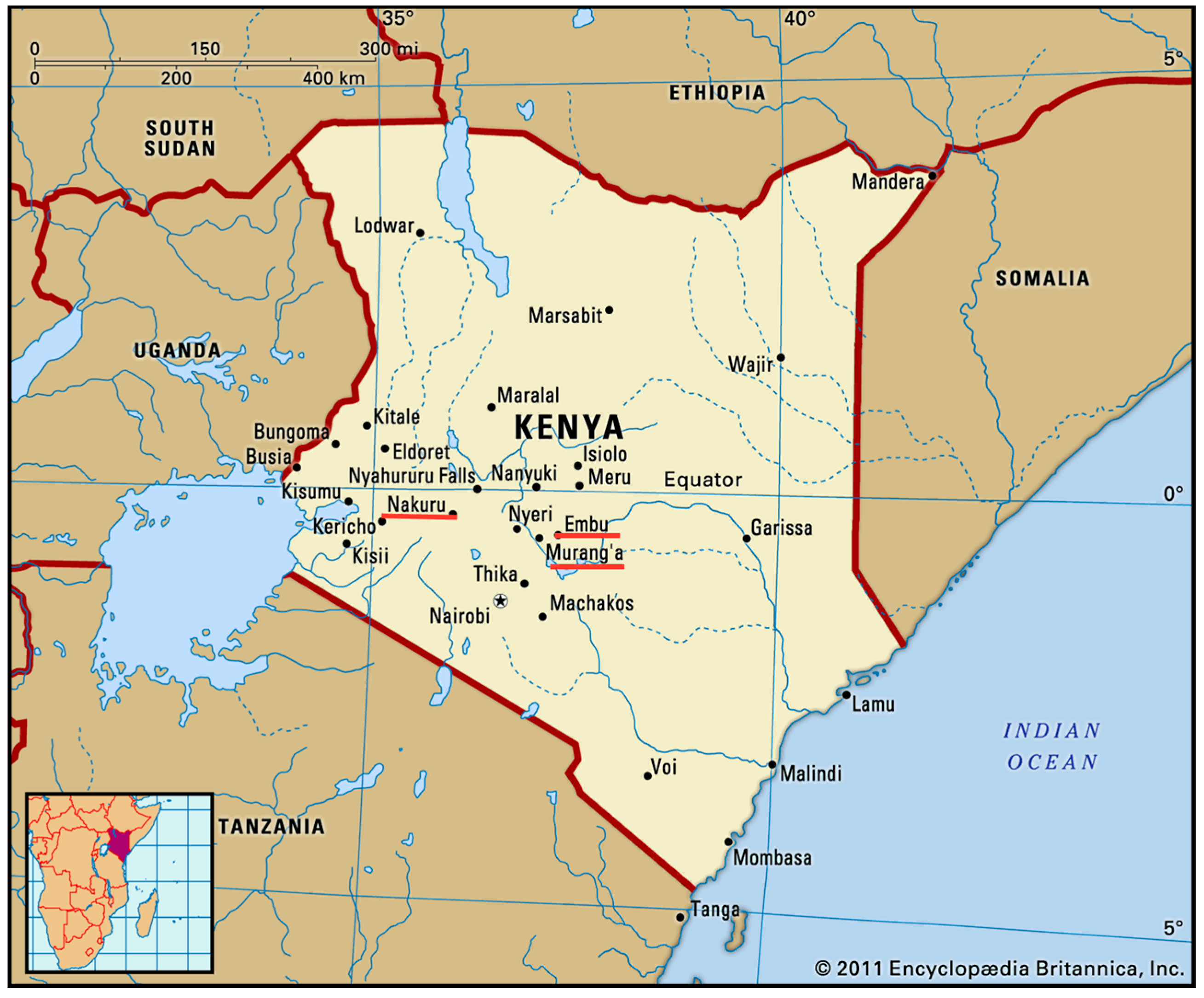
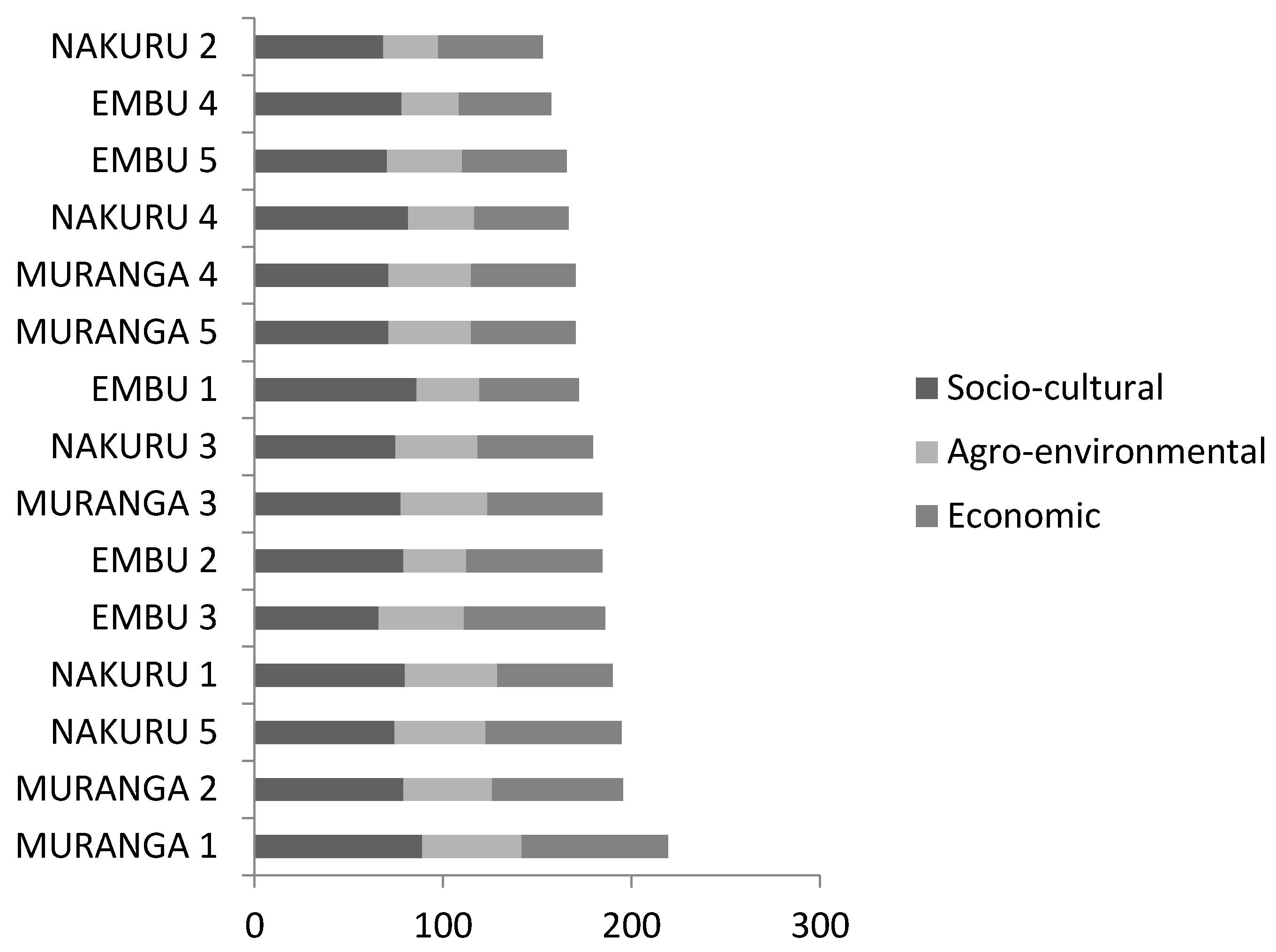
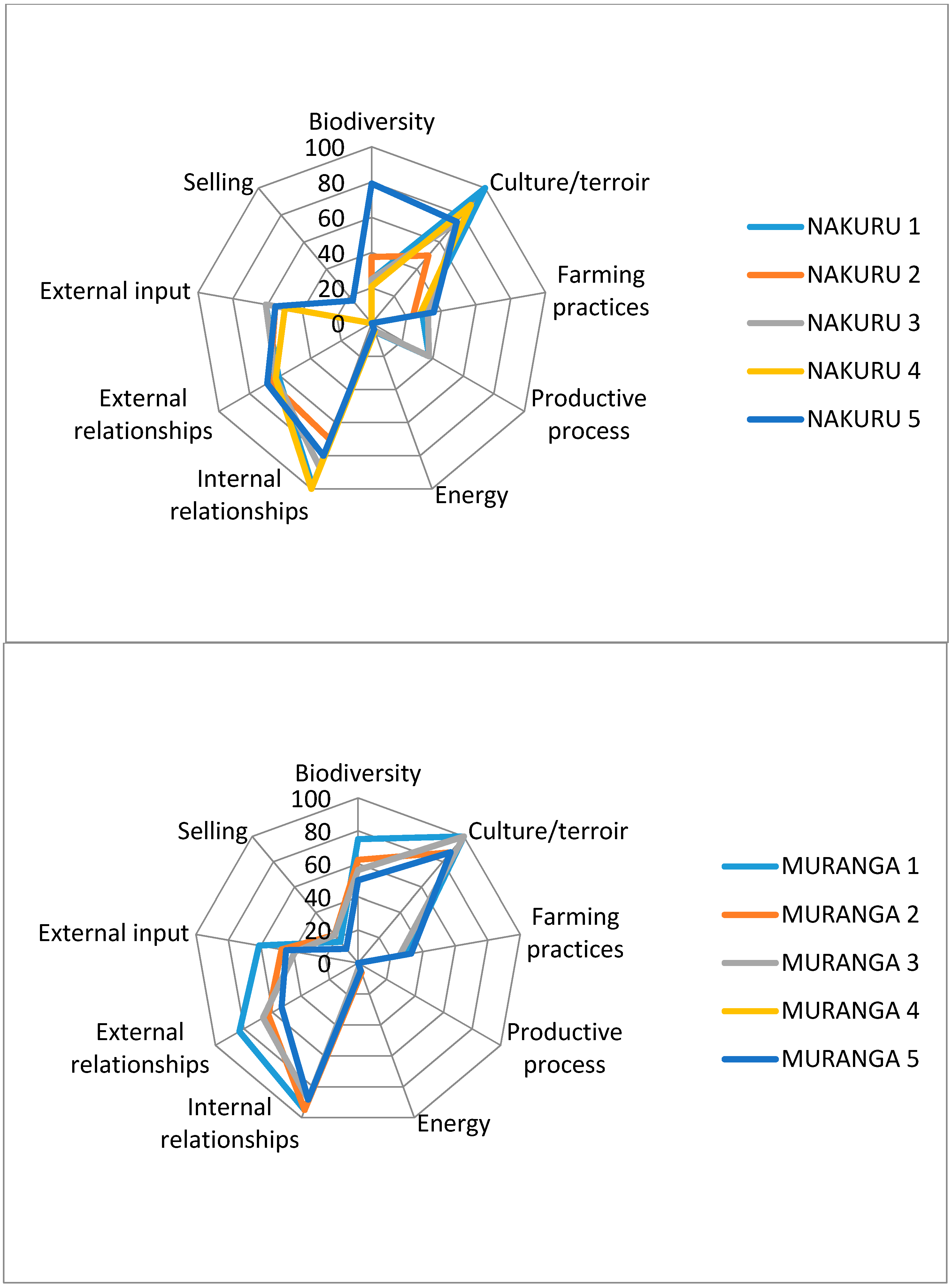

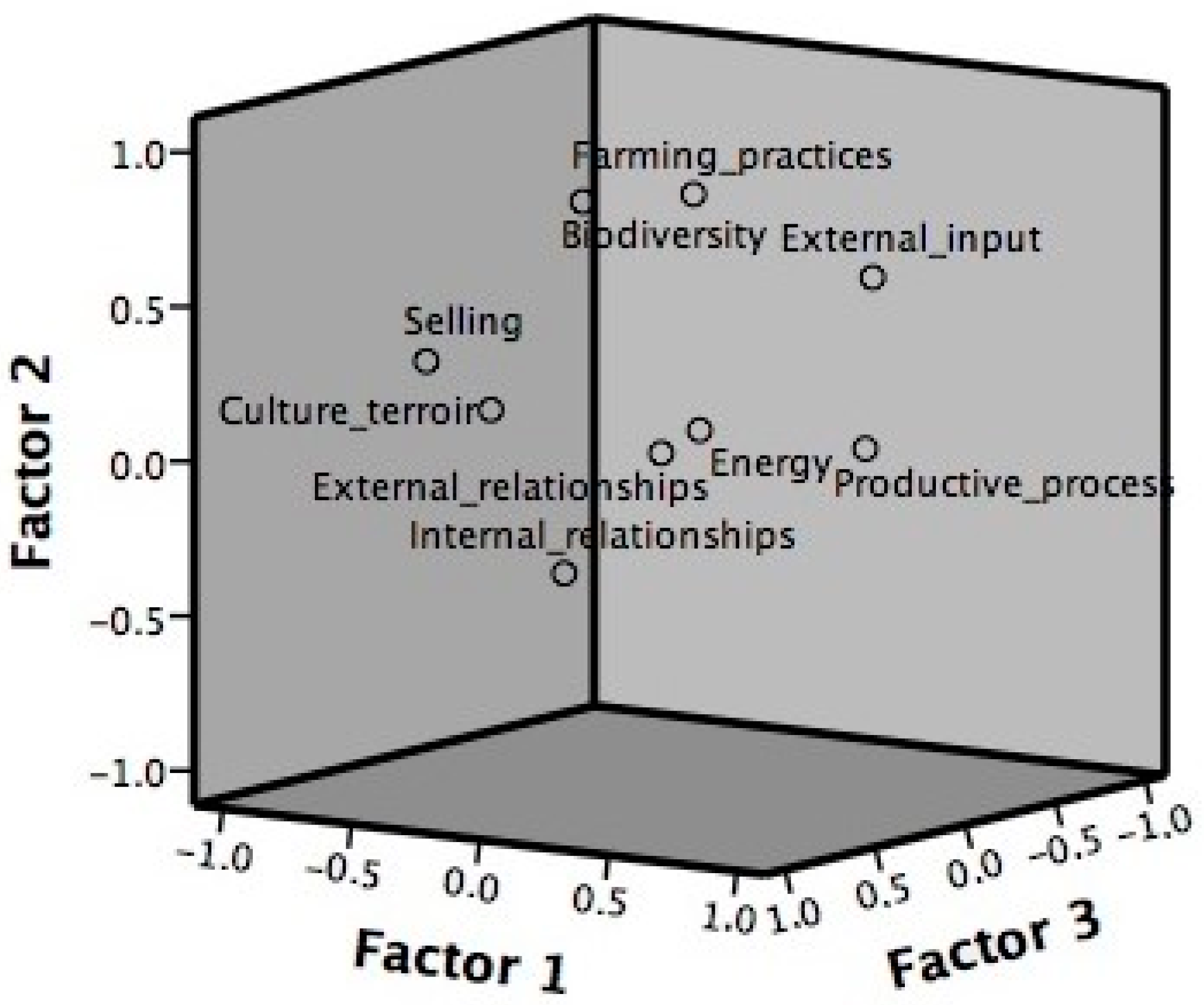
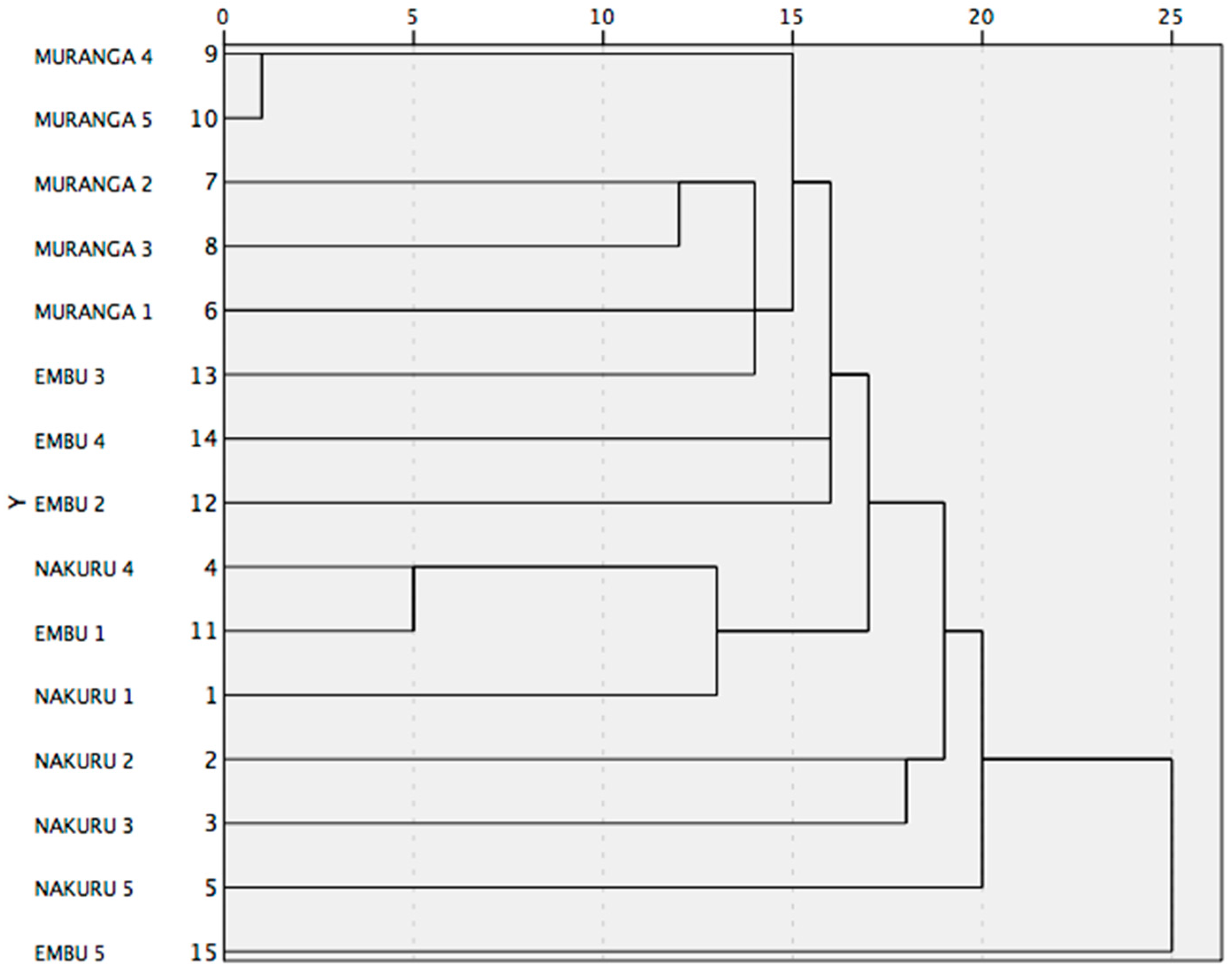
| County | Initiative | School | Locality | Size m2 | Participant | Start Date |
|---|---|---|---|---|---|---|
| Nakuru 1 | Slow food | Primary School | Langa Langa town | 3030 | 80 | 2012 |
| Nakuru 2 | ONG Necofa | Primary School | Village di Tayari | 90 | 40 | 2012 |
| Nakuru 3 | Slow food | Primary School | Village di Kangawa | 500 | 48 | 2011 |
| Nakuru 4 | ONG Ygep | Secondary school | Village di Temoyetta | 3500 | 156 | 2010 |
| Nakuru 5 | ONG Necofa | Primary School | City of Elburgon | 1000 | 52 | 2005 |
| Muranga 1 | Agricultural extension officer | Primary School | Village of Karega | 1500 | 30 | 2010 |
| Muranga 2 | Agricultural extension officer | Primary School | Village of Nyako | 2450 | 30 | 2010 |
| Muranga 3 | Agricultural extension officer | Primary School | Village of Ngungugu | 375 | 30 | 2009 |
| Muranga 4 | Agricultural extension officer | Primary School | Village of Kiganjo | 2450 | 30 | 2010 |
| Muranga 5 | Agricultural extension officer | Primary School | Village of Thika Greens | 3000 | 40 | 2010 |
| Embu 1 | Local agriculture ministry | Primary School | City of Embu | 1500 | 26 | 2010 |
| Embu 2 | School teachers | Primary School | City of Embu | 5000 | 35 | 2004 |
| Embu 3 | Local agriculture ministry | Primary School | Village of Manyatta | 4000 | 32 | 2003 |
| Embu 4 | School teachers | Secondary school | City of Runyenjes | 4000 | 22 | 2012 |
| Embu 5 | Local agriculture ministry | Secondary school | City of Embu | 2000 | 16 | 2011 |
| Level 1: Dimension | Socio-Cultural | Agro-Environmental | Economic |
| Level 2: Component | Internal relationships External relationships | Biodiversity Culture/terroir Farming practices Productive process Energy | External input Selling |
| Level 3: Indicator (number of indicators) | 19 | 22 | 9 |
| Level 1 Dimension | Level 2 Component | Level 3 Indicator | Indicator Definition | Data Type * | Indicator Weight ** |
|---|---|---|---|---|---|
| Socio-Cultural | Internal relationships | Decision-making structure | Transparency and clarity between the producers | b | 5 |
| Organization of the group | Presence/absence of an organization of producers | b | 5 | ||
| Involvement of younger generations | % of young people per the total product | a | 5 | ||
| Role of younger generations | % of young people pursuing the strategy of garden management | b | 5 | ||
| Involvement of women | % of women per total of product | a | 5 | ||
| Role of women | % of women pursuing the strategy of garden management | b | 5 | ||
| Use of the products | Rediscovery of historical recipes | a | 5 | ||
| Contribution to the diversification of the diet | The garden allows you to diversify the diet | b | 5 | ||
| Knowledge is transferred to the population in the garden | Sharing decisions and choices | a | 5 | ||
| Participation of the producers | How often the group meets | a | 5 | ||
| External relationships | Vertical transmission of knowledge | Recognition of the role of older generations | a | 5.55 | |
| Relationships with public and private institutions | Improvement of the relationships with public institutions and private entities and the possibility of influencing public policy | b | 5.55 | ||
| Relationships with the local network | There has been an improvement in the local population | a | 5.55 | ||
| Communication | Knowledge is transmitted to the population in the garden | b | 5.55 | ||
| Communications systems | Social networks are used to promote the garden | b | 5.55 | ||
| Events | Participation in events related to the Food Network | a | 5.55 | ||
| Transmission of knowledge | The group transfers knowledge to children | b | 5.55 | ||
| Relationship with suppliers | There is a direct relationship | b | 5.55 | ||
| History and territory | The garden has strengthened the area's history | b | 5.55 |
| Level 1 Dimension | Level 2 Component | Level 3 Indicator | Indicator Definition | Data Type * | Indicator Weight ** |
|---|---|---|---|---|---|
| Agro-environmental | Biodiversity | Number of species | % diversification of products | a | 6.66 |
| Number of local varieties/breeds | % of local varieties/breeds grown | a | 6.66 | ||
| Varieties/Race | Number of varieties/breeds | a | 6.66 | ||
| Culture/terroir | Systems | Traditional practices affecting orchard management | b | 5 | |
| Deforestation | Slash-and-burn | b | 5 | ||
| Type of fences | Type of material used for the fences | b | 5 | ||
| Traditional tools | Use of traditional tools for cultivation | b | 5 | ||
| Farming practices | Seeds | % in-house production of propagation material | a | 1.81 | |
| Forest and woody plants | % in-house production of propagation material | a | 1.81 | ||
| Rotations | % crop rotations | a | 1.81 | ||
| Intercropping | % intercropping with other plant species | a | 1.81 | ||
| Green manure | Using green manuring | a | 1.81 | ||
| Composter | Compost is created | b | 1.81 | ||
| Organic fertilization | % use of natural fertilizers | a | 1.81 | ||
| Fertilization | % use of synthetic chemical fertilizers | a | 1.81 | ||
| Defense products | % use of synthetic chemical pesticides | a | 1.81 | ||
| Natural defense products | % use of natural pesticides | a | 1.81 | ||
| Irrigation | Water conservation and an efficient use of resources | b | 1.81 | ||
| Productive process | Transformation | Rediscovery or experimentation with transformed products | a | 10 | |
| Conservation | Improvement of conservation quality | a | 10 | ||
| Energy | Water source | Type of water used for irrigation | b | 10 | |
| Renewable energy | Use of renewable energy sources | a | 10 |
| Level 1 Dimension | Level 2 Component | Level 3 Indicator | Indicator Definition | Data Type * | Indicator Weight ** |
|---|---|---|---|---|---|
| Economic | External input | Buying seeds-seedlings-saplings | % products bought | a | 7.14 |
| Buying forest plants | % products bought for forest plants | a | 7.14 | ||
| Buying compost | % compost bought | a | 7.14 | ||
| Buying chemical fertilizers | % products bought for the chemical fertilizer | a | 7.14 | ||
| Buying chemical herbicides/pesticides | % products bought for the chemical defense | a | 7.14 | ||
| Buying natural pesticides/herbicides | % products bought for the natural defense | a | 7.14 | ||
| Land | Type of contract that regulates the possession of the garden | b | 7.14 | ||
| Selling | Selling products | % of products sold on total | a | 25 | |
| Type of sales | Commercial network used | b | 25 |
| Component | Factor | ||||
|---|---|---|---|---|---|
| 1 | 2 | 3 | 4 | 5 | |
| Internal_relationships | 0.156 | −0.270 | 0.863 | 0.163 | 0.133 |
| External_relationships | −0.021 | −0.013 | 0.072 | 0.986 | −0.012 |
| Productive_process | 0.842 | 0.103 | 0.171 | −0.079 | −0.004 |
| Biodiversity | −0.495 | 0.717 | −0.169 | 0.241 | 0.223 |
| Culture_terroir | −0.134 | 0.229 | 0.857 | −0.065 | −0.088 |
| Farming_practices | 0.133 | 0.845 | 0.113 | −0.155 | −0.031 |
| Energy | 0.106 | 0.069 | 0.041 | −0.011 | 0.979 |
| External_input | 0.644 | 0.590 | −0.152 | 0.320 | 0.030 |
| Selling | −0.785 | 0.238 | 0.287 | −0.015 | −0.379 |
© 2016 by the authors; licensee MDPI, Basel, Switzerland. This article is an open access article distributed under the terms and conditions of the Creative Commons Attribution (CC-BY) license (http://creativecommons.org/licenses/by/4.0/).
Share and Cite
Sottile, F.; Fiorito, D.; Tecco, N.; Girgenti, V.; Peano, C. An Interpretive Framework for Assessing and Monitoring the Sustainability of School Gardens. Sustainability 2016, 8, 801. https://doi.org/10.3390/su8080801
Sottile F, Fiorito D, Tecco N, Girgenti V, Peano C. An Interpretive Framework for Assessing and Monitoring the Sustainability of School Gardens. Sustainability. 2016; 8(8):801. https://doi.org/10.3390/su8080801
Chicago/Turabian StyleSottile, Francesco, Daniela Fiorito, Nadia Tecco, Vincenzo Girgenti, and Cristiana Peano. 2016. "An Interpretive Framework for Assessing and Monitoring the Sustainability of School Gardens" Sustainability 8, no. 8: 801. https://doi.org/10.3390/su8080801
APA StyleSottile, F., Fiorito, D., Tecco, N., Girgenti, V., & Peano, C. (2016). An Interpretive Framework for Assessing and Monitoring the Sustainability of School Gardens. Sustainability, 8(8), 801. https://doi.org/10.3390/su8080801







